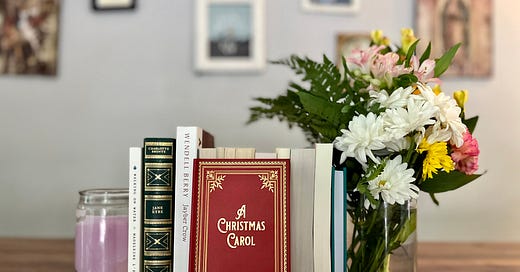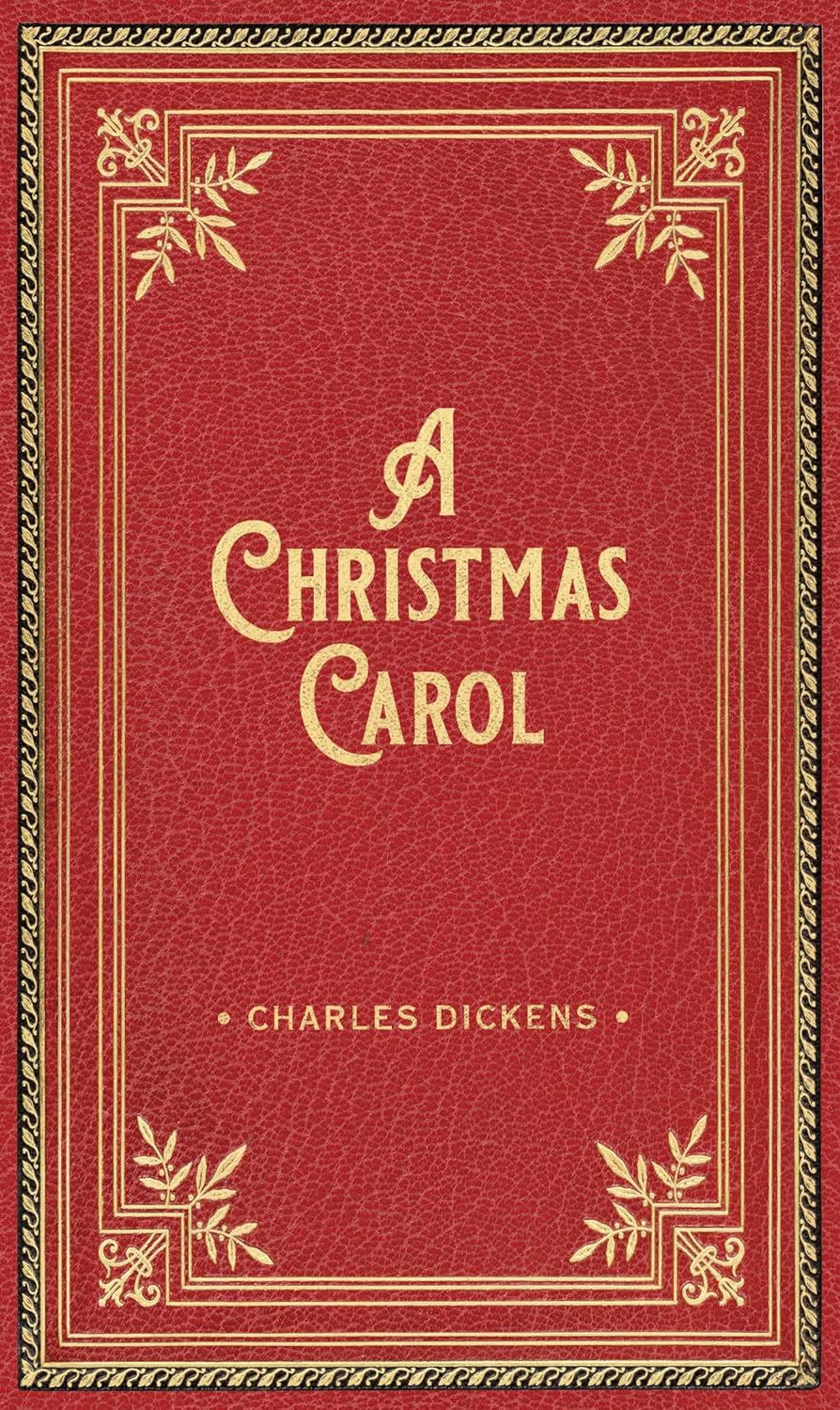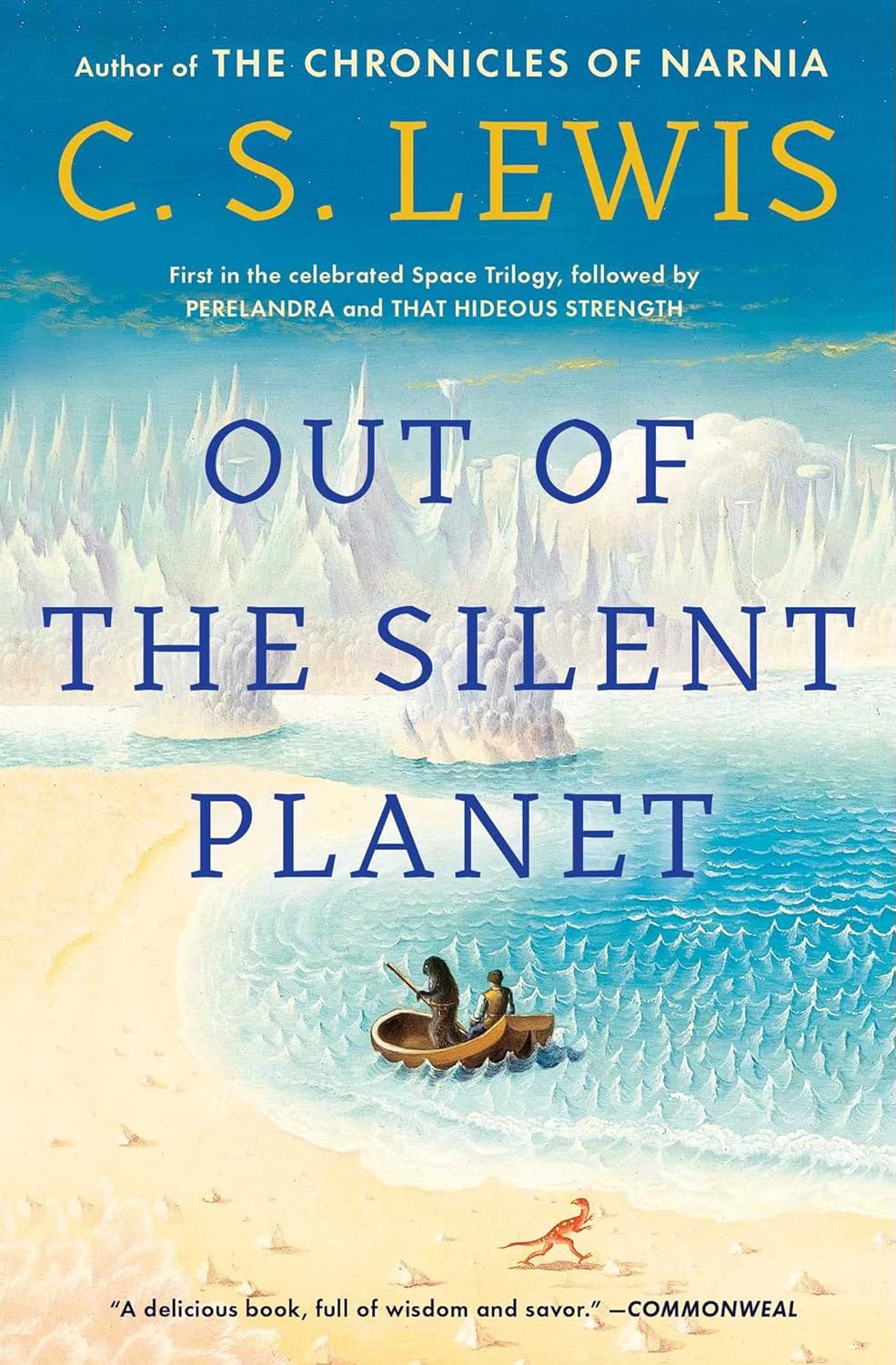Welcome to Reading Revisited, a place for friends to enjoy some good old-fashioned book chat while revisiting the truth, beauty, and goodness we’ve found in our favorite books.
Hello, readers!
I hope you’ve all had a wonderful week and remain as delighted as I am by this little book. I was beginning to read next week’s chapter this morning when my five-year-old asked me to read it aloud to him. Once he overcame his initial disappointment at Santa Claus not being in the story, he listened with rapt attention, and it was so lovely being able to share some little moments of my own reading life with him!
I must admit, as we dive into this section, that I approach it with a bit of healthy fear and trembling. This chapter, besides being my personal favorite, is also of the utmost importance in the structure of the story. As I read this week, a C.S. Lewis quote from The Four Loves came often to my mind:
“Love anything and your heart will be wrung and possibly broken. If you want to make sure of keeping it intact you must give it to no one, not even an animal. Wrap it carefully round with hobbies and little luxuries; avoid all entanglements. Lock it up safe in the casket or coffin of your selfishness. But in that casket, safe, dark, motionless, airless, it will change. It will not be broken; it will become unbreakable, impenetrable, irredeemable. To love is to be vulnerable.” (C.S. Lewis, The Four Loves)
Scrooge’s unbidden tears as he encounters his past self, even in the happy times, reveal a slow breaking of the impenetrable self he has constructed throughout his life (or perhaps a slow unbinding of the chain he has wrought). It is this chapter which reveals the foundational change which Scrooge must undergo to truly love and be whole.
Here are some things I noticed from this section:
The chapter opens with Scrooge continuing to vacillate between faith and incredulity as to the reality of his experience with Marley’s ghost:
“Every time he resolved within himself, after mature inquiry, that it was all a dream, his mind flew back again, like a strong spring released, to its first position, and presented the same problem to be worked all through, “Was it a dream or not?” (p. 27)
I will admit that I was always slightly disturbed by the description of the first ghost, until I considered how the description is a beautiful representation of memory itself.
“It was a strange figure — like a child: yet not so like a child as like an old man…Its hair, which hung about its neck and down its back, was white as if with age; and yet the face had not a wrinkle in it…” (p. 28)
and later:
“the figure fluctuated in its distinctness: being now a thing with one arm, now with one leg, now with twenty legs, now a pair of legs without a head, now a head without a body: of which dissolving parts, no outline would be visible in the dense gloom wherein they melted away. And in the very wonder of this, it would be itself again; distinct and clear as ever.” (p. 29)
Isn’t this such an apt analogy of the way our memories serve us? At times we remember photographically, with clarity and precision. Other times we remember with gross exaggeration one way or another. And still at other times our memories may be only vague impressions that disperse with our efforts to grasp and pull them into focus.
I love seeing Scrooge overcome with emotion upon finding himself back in the home of his boyhood:
“Good Heaven!” said Scrooge, clasping his hands together…”I was bred in this place. I was a boy here!” (p.31)
and I must point out a bit of absolutely beautiful prose later in this section when Scrooge approaches his former schoolhouse:
“Not a latent echo in the house, not a squeak and scuffle from the mice behind the panelling, not a drip from the half-thawed water-spout in the dull yard behind, not a sigh among the leafless boughs of one despondent poplar, not the idle swinging of an empty store-house door, no, not a clicking in the fire, but fell upon the heart of Scrooge with a softening influence, and gave a freer passage to his tears.” (p.33)
The delight which Scrooge experiences upon seeing the physical manifestations of the characters which populated his imagination during the lonely boyhood Christmases in which he was left at school is so lovely and is reminiscent to other Dickensian characters (like David Copperfield for instance) who find a balm for their loneliness in great stories. This is also the first moment in which Scrooge connects his own past loneliness and pain to the present:
“What is the matter?” asked the Spirit.
“Nothing”, said Scrooge. “Nothing. There was a boy singing a Christmas Carol at my door last night. I should like to have given him something: that’s all.” (p. 35)
I won’t say much about the scene at Fezziwig’s, but I’ll just point out a few things that stand out:
First, the narrator notes how rapidly Scrooge and his fellow apprentice clear away the tables and complete their tasks:
“You wouldn’t believe how those two fellows went at it!…It was done in a minute.” (p. 39)
Their otherwise burdensome tasks are rendered light by the promise of joyful leisure to follow. (Keeping my eyes open for
’s upcoming essay on leisure in the holiday season as I consider this further).The celebration included people from all stations of life. Not only were the apprentices included in the merriment, but even the housemaid and under-servants.
Scrooge’s emphasis on the happiness that Fezziwig gave to them is significant. It is reminiscent of the explanation given by Marley’s ghost who claimed that a ghost like himself is forced to:
“witness what it cannot share, but might have shared on earth, and turned to happiness.” (p. 21)
And again, here, Scrooge is softened by his past experience as he expresses his desire to speak kindness to Mr. Cratchit.
We come next to the painful recollection of Scrooge’s heartbreak (or perhaps by this point his heart had already been rendered unbreakable?). Belle points out that Scrooge’s goal, by amassing wealth and secluding himself, is to render himself impenetrable:
“You fear the world too much…All your other hopes have merged into the hope of being beyond the chance of its sordid reproach. I have seen your nobler aspirations fall off one by one, until the master-passion, Gain, engrosses you.” (p. 44)
Scrooge is joyfully willing to enjoy the scenes of his happy memories, but upon encountering the first painful scene, he is overcome by his vulnerability which he has fought so hard to avoid.
I love the note at the end about Scrooge wrestling the ghost after witnessing the painful comments uttered about himself in
the home of Belle, and that try as he might he cannot effect any change upon the ghost (which, again, in a sense represents memory itself):
“the Ghost with no visible resistance on its own part was undisturbed by any effort of its adversary” (p.49)
Themes to keep an eye on
More on Scrooge’s identity: In the interaction with Belle, she continually refers to his past self as a different person:
“You are changed. When [our contract] was made, you were another man.” (p. 44)
Bells: Several more bells in this chapter. Not only do we open with the chiming of the hour, anxiously awaited by Scrooge, but the narrator points out the old bell over the schoolhouse, and we even see this popping up in the name of Scrooge’s old flame.
Childlikeness: We continue to see children and the childlike upheld in Scrooge’s memory. First, as Scrooge looks back on his child-self, he is a boy of vivid imagination despite his sad circumstances. We also see this theme in Scrooge’s sister, Fan, and his former master, Fezziwig. Finally, the scene at the home of Belle and her husband draws such a stark distinction to Scrooge’s own cold and quiet life:
“The noise in this room was perfectly tumultuous, for there were more children there, than Scrooge in his agitated state of mind could count; and, unlike the celebrated herd in the poem, they were not forty children conducting themselves like one, but every child was conducting itself like forty.” (p. 46)
The father of the family enters and comments that Scrooge is:
“Quite alone in the world, I do believe.” (p. 48)
This is too much for Scrooge to bear and he wrestles with the ghost and begs to be removed.
Thank you all for reading along with us! Next week’s reading will be Stave 3 - the longest of the chapters. I look forward to checking back in with you all next week and to see where Dickens takes us!
Until next time, keep revisiting the good books that enrich your life and nourish your soul.
In Case You Missed It:
What We’re Reading Now:
December
A Christmas Carol by Charles Dickens
January
Othello by William Shakespeare
February
Out of the Silent Planet AND Perelandra by C.S. Lewis
A Few Reminders:
If you are wanting to get in on the in person or virtual community please contact us!
We have turned on paid subscriptions which will allow you to support the work we are doing here as well as receive Read Along Guide PDFs each month, voice recordings of the Read Along Guides and Essays, and we are working on (printable) bookmarks for each book.
If you would like to make a small contribution to the work we’re doing here at Reading Revisited, we invite you to do so with the Buy (Us) a Coffee button below. We so appreciate your support!
*As always, some of the links are affiliate links. If you don’t have the books yet
and are planning to buy them, we appreciate you using the links. The few cents earned with each purchase you make after clicking links (at no extra cost to you) goes toward the time and effort it takes to keep Reading Revisited running and we appreciate it!
Keep reading with a 7-day free trial
Subscribe to Reading Revisited to keep reading this post and get 7 days of free access to the full post archives.









